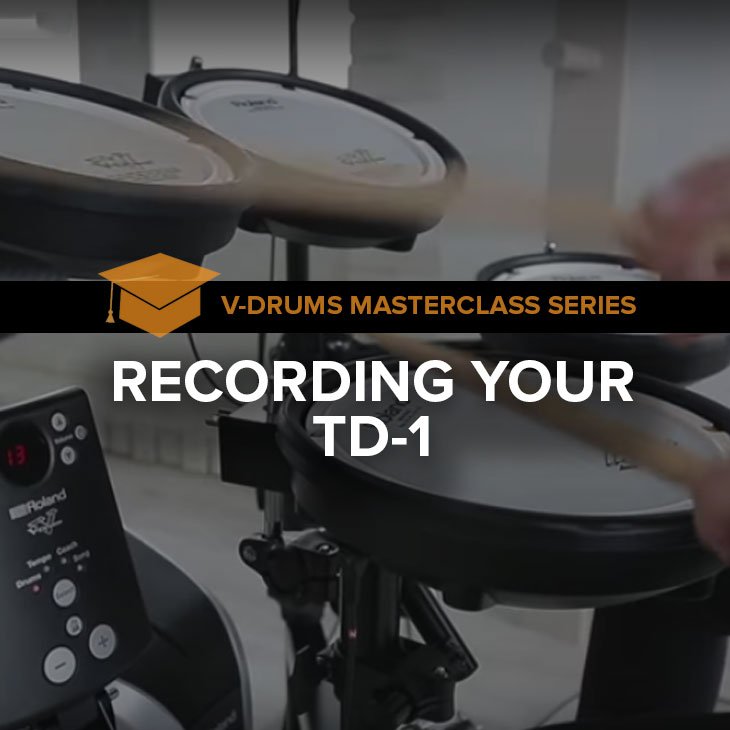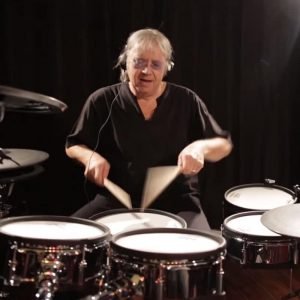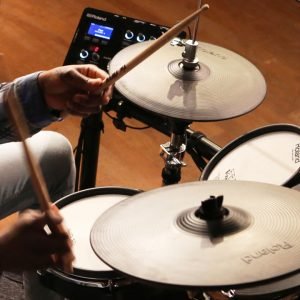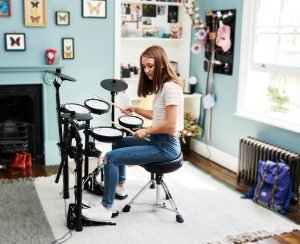Recording the Roland TD-1 is easy!
Here’s how to record MIDI and audio with one of the world’s most popular drum kits.
Acoustic drum recording is an art form.
Finding a balance between equipment, knowledge, patience and money that works for your project is a skill that comes with experience and time.
Being a collection of various percussion instruments, a drum kit requires different types of microphones and positioning to make one cohesive drum kit sound.
Contributed by Simon Ayton for Roland Corporation Australia
ENTER ELECTRONIC DRUMS…
Recording electronic drums is simple when compared to recording acoustic drums.
You can record almost anywhere, the kit will fit quickly into a recording space and with unlimited sound and performance possibilities, your options for creativity are increased dramatically.
See the Roland V-Drums Range Explained Here
When recording the Roland TD-1, you can forget about tuning, muffling, microphone positioning and expensive preamplifiers.
Specially designed studios, noise problems and studio hire fees are things of the past too allowing you to relax, focus on the music and just play.
V-Drums are ideal for recording yourself, because their simplicity means you can focus on your actual performance.
When recording the Roland TD-1, capture the performance first, choose sounds later.
Here’s How.
RECORDING THE TD-1 SERIES KITS
The TD-1 series V-Drums could be just the thing for you if you’re pushed for space or just starting out with the drums.
As the ultimate portable drum kit, the TD-1 can be ready to record in seconds.
Even for a beginner with no previous experience, the TD-1 is simple to set up and operate.
Wether it’s a computer or iOS device, the TD features a MAC and PC compatible USB port for connection.
This single connection makes MIDI recording a breeze. Use MIDI recording to capture the actual notes of the performance.
Audio recording is about capturing the actual sound, either at the same time as the notes or once the MIDI performance has been edited to perfection.
Click here for more information about the differences between MIDI and audio.
Here’s how to record MIDI from the TD-1 using the USB port.
RECORDING THE MIDI NOTES OF THE TD-1
Follow these steps if you want to record and edit the actual notes of your performance.
- Connect the TD-1 via a standard USB lead to your MAC or PC.
- Create a MIDI track in your music software and choose a software drum plug-in.
- Select the TD-1 as the input.
- Arm RECORD and capture some playing.
- Connect an audio lead from the audio output of the computer to the MIX IN of the TD-1 to hear the sounds from the software.
- Playback the MIDI that will play your performance, using the drum plug-in sounds.
RECORDING THE AUDIO SOUND OF THE TD-1
When recording the Roland TD-1 as audio, grab an audio interface.
Audio interfaces range from 2 channels through to multiple channels for recording more instruments.
See the Roland range of audio interfaces here.
Once you have an audio interface, follow these steps to capture the sound of the kit.
- Connect the TD-1 via the LINE OUT connector to your audio interface using a 3.5mm stereo to 2x mono jack insert cable

Audio Insert Cable for recording the TD-1 - Create a single stereo audio track in your music software.
- In the recording software, select whichever inputs your TD-1 is connected to, eg: 1 / 2.
- Arm the track and record a section of playing.
- Using another insert cable like the one in step 1, connect an audio lead from the audio output of the audio interface to the MIX IN of the TD-1. This allows you to hear your audio recording back through the TD-1.
OTHER THINGS YOU CAN DO WITH THE TD-1
Now that you have the connections made to your MAC or PC, you can try some of these other possibilities.
![]()
Learn to play with DT-1 Drum Tutor
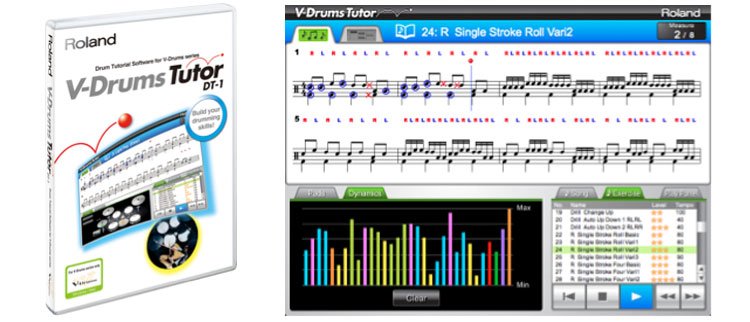
Guiding you from your very first lesson through to specially chosen practice rudiments and advanced beats with fills, DT-1 is a comprehensive drum tuition software program for V-Drums on MAC and PC.
DT-1 is packed with lessons and interacts with your playing to show you how you are doing in real-time with ticks and crosses.
For detailed and interactive learning, load standard MIDI files (SMF) to view the actual drum notation music score.
You will see actual musical notation while you learn at a pace that suits you.
![]()
Take your playing to the next level and have fun with Melodics for V-Drums
![]()
Connect to an iOS device
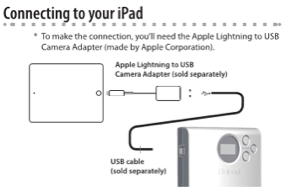
To Interact with any of the MIDI Apps like Garageband directly from the TD-1, use the separately available Apple Camera Connection Kit.
![]()
Notate your drum parts

Save your MIDI recordings as SMF (Standard MIDI Files) and load them into music notation software to see the drum score.
![]()
Related Articles
V-DRUMS RANGE OVERVIEW
TYPICAL DRUM PLAYING TECHNIQUES WITH V-DRUMS
MIDI VS. AUDIO
Related Products


